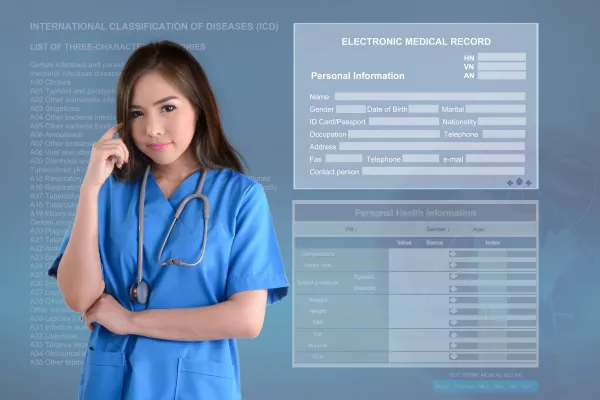Pediatric Coding Alert
Read This FAQ for the 411 on ROS
You cannot choose an E/M code before settling on ROS level.
One of the important aspects of evaluation and management (E/M) coding is history, and a vital part of selecting the appropriate history level is nailing the provider’s review of systems (ROS) level.
Without determining the appropriate ROS level, you could have trouble choosing the proper E/M code.
Keep ROS from becoming an issue by reviewing this expert FAQ.
Q: What Is ROS?
A: According to Lynn M. Anderanin, CPC, CPMA, CPPM, CPC-I, COSC, senior director of coding education at Healthcare Information Services in Park Ridge, Ill., “ROS is part of the history for an E/M service for the physician to understand any conditions the patient has experienced in the past.”
The “systems” referenced in ROS are:
- Constitutional symptoms (fever, weight loss, etc.)
- Eyes
- Ears, nose, mouth, throat
- Cardiovascular
- Respiratory
- Gastrointestinal
- Genitourinary
- Musculoskeletal
- Integumentary (skin and/or breast)
- Neurological
- Psychiatric
- Endocrine
- Hematologic/lymphatic
- Allergic/immunologic
To conduct ROS, the pediatrician asks a series of questions related to the patient’s signs/symptoms. Providers use ROS data to zero in on the problem by helping to clarify a differential diagnosis and identifying any needed testing. ROS will also help the accumulate “baseline data on other systems that might be affected by any possible management options,” explains Cynthia A. Swanson, RN, CPC, CEMC, CHC, CPMA, senior manager of healthcare consulting for Seim Johnson in Omaha, Neb.
Remember: In order to bulwark your ROS coding, be sure that the systems the pediatrician reviews relate to the systems listed as problems in the history of present illness (HPI), says Jan Blanchard, CPC, CPMA, pediatric solutions consultant at Vermont-based PCC. If there’s no link between ROS and HPI, you might have to review your ROS choice.
What Are the Different ROS Levels?
There are three different levels of ROS, confirms Anderanin:
1. Problem-pertinent: For a problem-pertinent ROS, the pediatrician must review a single system. So, if the provider treats a patient for a runny nose, and notes indicate that he reviewed the ears, nose, mouth, throat system, it’s a problem-pertinent ROS.
2. Extended: The pediatrician must review between two and nine systems for extended ROS. So, if the provider treats a patient for a runny nose, upset stomach, wheezing, and fever, he’s reviewed four systems:
- ears, nose, mouth, throat;
- gastrointestinal
- respiratory; and
- constitutional.
3. Complete: If the pediatrician reviews at least 10 systems, you can mark complete ROS. According to the 1995 and 1997 E/M Documentation Guidelines, you must review and individually document all 10-plus systems with positive or pertinent negative responses for complete ROS. For the remaining systems, a notation indicating “all other systems are negative” is allowable. Without this notation, however, you must have individual documentation proving review of 10 or more systems for complete ROS.
Related Articles
Pediatric Coding Alert
- Procedure Coding:
Avoid Pay Cut, Learn When Laceration Code Is Correct
For primary care providers, this service often walks the E/M-procedure line. Spring is nigh, as [...] - E/M Coding:
Read This FAQ for the 411 on ROS
You cannot choose an E/M code before settling on ROS level. One of the important [...] - Quiz:
Put Your ROS Skills to Use on This Level-Check
Three scenarios, three ROS levels; do you know which is which? Coders that can quickly [...] - Case Study Corner:
Put 25/57 Decision into Focus with These Scenarios
Remember global periods for procedures to ease modifier choice. Evaluation and management (E/M) services that [...] - Quiz Answers:
Put Your ROS Skills to Use on This Level-Check
Three scenarios, three ROS levels; do you know which is which? Check out these answers [...] - You Be the Coder:
Non-Surgical Services for Recovering Surgery Patients
Question: One of our patients underwent emergency appendectomy surgery at the local emergency department (ED) at [...] - Reader Question:
Tread Carefully with Preventive Visit-E/M Combo
Question: Our pediatrician often performs initial comprehensive preventive medicine services for patients. If the patient has [...] - Reader Question:
Choking Dx Choice Is 'Feeding Difficulties'
Question: Our physician evaluated a newborn baby whose mother said that the child would often get [...]




